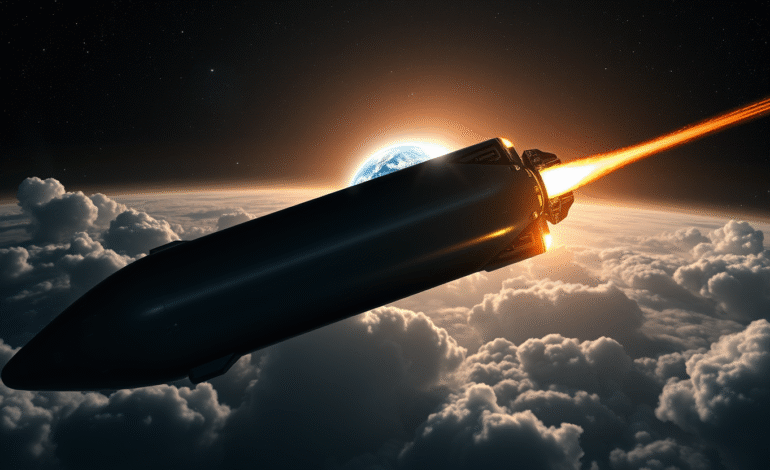SpaceX’s Starship Rocket Makes Major Leap Forward with Successful 10th Test Flight and In-Flight Upgrade Demonstration

In an impressive display of engineering prowess, SpaceX’s colossal Starship rocket soared into the night sky on its tenth test flight Tuesday evening, achieving two long-anticipated milestones and marking a significant turning point after a series of setbacks.
The imposing 403-foot structure lifted off from SpaceX’s launch facility and recently incorporated city, Starbase, at 7:30 p.m. ET, following two earlier postponements this week. Propelled by 33 methane-fueled Raptor engines, the rocket climbed steadily before separating approximately three minutes after liftoff.
During descent, the Super Heavy booster executed a novel maneuver: intentionally shutting down the landing engines and transitioning to backup engines. This test will aid engineers in understanding the booster’s performance in the event of failure. The test seemed to be successful, with the 232-foot-tall booster achieving a targeted splashdown in the Gulf of Mexico.
Meanwhile, the upper stage, known as Starship, reached space for the first time on this flight. A crucial milestone was achieved when it opened its Pez-like payload door and released eight mass-similar Starlink satellites—a capability SpaceX had planned but had failed to demonstrate on previous missions. Additionally, the company successfully reignited one of the Raptor engines in space before steering the vehicle towards the Indian Ocean for a splashdown, tip-over, and subsequent explosion.
As the Starship plunged through the atmosphere, it was subjected to incredible heat, providing an optimal testing ground for the upgraded thermal-protection system. SpaceX also utilized this test to conduct a series of experiments, such as removing tiles from sections of the ship to assess its performance during reentry, as well as testing new metallic and actively cooled tiles.
Perhaps most importantly, the upper stage completed the entire test and splashed down in the Indian Ocean without losing communication with SpaceX engineers. During the last flight, the ship reached space but lost attitude control during the coast phase, preventing the payload doors from opening. It appears that these issues have been resolved.
This test represents a substantial progression for the Starship program, a venture SpaceX aims to eventually use to transport humans and cargo to Mars. Although there are still numerous technical milestones to be surmounted before this goal can be achieved, tonight’s flight brought them one step closer.






